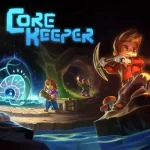Advertisement
Warning: This article contains major spoilers for Agony. If you haven’t played the game, proceed with caution.
Agony, a 2018 first-person survival horror game developed by Madmind Studio and published by PlayWay, immerses players in a grotesque, nightmarish depiction of Hell. The game follows Amraphel, a tormented soul with no memories of his past, navigating a visceral underworld to uncover the secrets of the Red Goddess, the enigmatic architect of this hellscape. While Agony is often noted for its graphic imagery and unsettling atmosphere, its narrative structure—fragmented, non-linear, and deliberately disorienting—stands as a defining feature that both captivates and frustrates players. This article delves deeply into a specific issue within Agony’s plot: its fragmented narrative structure, analyzing how it shapes the player’s experience, reflects the protagonist’s fractured psyche, and challenges conventional storytelling in survival horror. By examining key moments across the game’s timeline, we explore how this narrative approach amplifies the themes of despair, identity loss, and moral ambiguity, while also contributing to the game’s polarizing reception.
<picture will be updated soon>
The Descent: A Disorienting Introduction to Hell
Falling into the Unknown
Agony begins with Amraphel plummeting into Hell, a tormented soul stripped of memory and identity. The opening sequence, a chaotic descent through a fleshy, pulsating abyss, sets the tone for the game’s fragmented narrative. Unlike traditional horror games that provide a clear exposition, Agony offers little context, thrusting players into a disorienting world where grotesque visuals—rivers of blood, demonic creatures, and organic architecture—take precedence over a cohesive storyline. This lack of initial clarity mirrors Amraphel’s own amnesia, aligning the player’s confusion with the protagonist’s, but it also risks alienating those expecting a linear narrative. The game’s opening dialogue, sparse and cryptic, hints at a greater purpose tied to the Red Goddess, yet provides no immediate answers, establishing the fragmented storytelling as a deliberate design choice.
A World Without Anchors
The absence of a clear narrative anchor in Agony’s opening is both a strength and a flaw. The game relies heavily on environmental storytelling—scattered notes, tortured souls’ whispers, and grotesque imagery—to piece together Amraphel’s purpose. However, the lack of a guiding narrative thread makes it difficult for players to invest in the story early on. The ability to possess other martyrs and demons, introduced early, adds a layer of intrigue but further fragments the narrative by shifting perspectives without explanation. This mechanic, while innovative, disrupts traditional storytelling by prioritizing gameplay over a coherent plot, leaving players to navigate a maze of disconnected events and surreal encounters.
The Red Goddess: A Cryptic Narrative Focal Point
The Enigmatic Architect
Central to Agony’s narrative is the Red Goddess, a mysterious figure who serves as both a literal and symbolic goal for Amraphel. Described as the creator of Hell and the key to escape, she is a distant, almost mythic presence whose role is revealed through fragmented clues—notes, visions, and NPC interactions. The Red Goddess embodies the game’s thematic core: the allure of salvation in a place of eternal torment. Yet, her elusive nature and the game’s refusal to provide clear exposition about her role create a narrative gap that frustrates players seeking resolution. This fragmentation reflects the game’s intent to mirror Hell’s chaotic, unknowable nature but often leaves players grasping for meaning.
Symbolism Over Clarity
The Red Goddess’s fragmented presence is a deliberate narrative choice, emphasizing thematic depth over accessibility. Her image—often depicted as a seductive yet terrifying figure—appears in visions and statues, but her true motives remain ambiguous. Is she a savior, a manipulator, or a manifestation of Amraphel’s own desires? The game’s non-linear structure, with its looping paths and surreal sequences, mirrors this ambiguity, forcing players to piece together her significance from disjointed fragments. While this approach enhances the game’s atmosphere, it risks alienating players who find the lack of narrative cohesion disorienting, as the Red Goddess remains more a concept than a fully realized character.
Possession Mechanic: A Narrative Disrupter
Shifting Perspectives
Agony’s unique possession mechanic allows Amraphel to inhabit other martyrs and demons, a gameplay feature that significantly impacts the narrative structure. Each possession shifts the player’s perspective, offering glimpses into the minds of Hell’s denizens but disrupting the continuity of Amraphel’s own story. For example, possessing a martyr might reveal a snippet of their suffering, while controlling a demon offers a predatory viewpoint, but these shifts rarely connect directly to the main plot. This fragmentation creates a sense of disorientation, aligning with the game’s theme of identity loss, but it also hinders narrative momentum, as players struggle to maintain a cohesive sense of Amraphel’s journey.
Narrative Cost of Innovation
While the possession mechanic is a bold attempt to integrate gameplay with storytelling, it often undermines the narrative’s coherence. The game provides minimal explanation for how or why Amraphel can possess others, leaving players to infer connections between these perspectives and the overarching goal of reaching the Red Goddess. The lack of a unified narrative thread—combined with frequent deaths and respawns that reset progress—creates a disjointed experience where story fragments feel like disconnected vignettes rather than a cohesive whole. This approach reinforces the game’s theme of a fractured psyche but sacrifices clarity, contributing to its mixed critical reception.
Environmental Storytelling: Hell as a Narrative Canvas
A Visceral Tapestry
Agony’s Hell is a grotesque masterpiece of environmental design, with fleshy corridors, bone-laden structures, and rivers of blood serving as a narrative canvas. The game relies heavily on its environment to convey story elements, with scattered notes and tortured souls’ ramblings providing fragmented glimpses into Hell’s history and Amraphel’s purpose. For instance, notes found in early levels hint at a larger conspiracy involving the Red Goddess and the martyrs’ suffering, but their cryptic nature requires players to actively interpret them. This environmental storytelling aligns with the game’s non-linear structure, encouraging exploration but demanding patience to piece together the narrative puzzle.
The Limits of Immersion
While the environment is visually striking, its narrative impact is limited by the game’s fragmented delivery. The lack of a clear progression from one revelation to the next makes it difficult for players to connect the dots between environmental clues and the main plot. For example, a note about a martyr’s betrayal might intrigue but lacks context without subsequent clarification. The game’s reliance on atmosphere over explicit storytelling creates a sense of immersion but risks leaving players lost in a sea of disconnected imagery, reinforcing the narrative’s fragmented nature and contributing to its divisive reception.
The Role of Notes: Fragmented Lore Delivery
Scattered Pieces of Truth
Notes scattered throughout Agony’s Hell serve as a primary method of lore delivery, offering insights into the world’s mythology and Amraphel’s past. These notes, often written by other martyrs or demons, provide fragmented details about the Red Goddess, the hierarchy of Hell, and the protagonist’s mysterious accusation that others suffer because of him. For example, a note in the early catacombs suggests Amraphel’s actions in life led to his damnation, but its vague wording leaves more questions than answers. This approach creates a sense of mystery but requires players to actively seek and interpret these fragments, which can feel tedious in the game’s oppressive environment.
A Double-Edged Sword
The use of notes as a narrative device is both a strength and a weakness. On one hand, they add depth to Agony’s world, offering tantalizing hints about its lore and Amraphel’s identity. On the other, their scattered placement and cryptic content exacerbate the game’s fragmented narrative, as players must navigate dangerous areas to collect them without guaranteed narrative payoff. The lack of a centralized narrative thread to tie these notes together means that many players may miss crucial details, further fragmenting their understanding of the story and contributing to the game’s reputation for inaccessibility.
Non-Linear Exploration: A Maze of Meaning
A Semi-Open Hellscape
Agony’s semi-open world encourages exploration through branching paths and hidden areas, aligning with its non-linear narrative structure. Players can choose different routes to reach the Red Goddess, each offering unique encounters and lore fragments. For example, one path might lead to a shrine with a cryptic vision, while another reveals a demon’s lair with a note about betrayal. This design reflects the game’s theme of a chaotic, uncontrollable Hell, but it also fragments the narrative by presenting story elements out of order, making it challenging to construct a cohesive storyline.
The Cost of Freedom
The freedom to explore comes at the cost of narrative clarity. The game’s non-linear structure means players may encounter story fragments in varying orders, leading to confusion about their significance. For instance, a vision of the Red Goddess in one area might precede a note explaining her role in another, disrupting the narrative flow. While this mirrors the disorientation of Hell, it risks alienating players who prefer a guided story, contributing to Agony’s polarizing reception. The game’s multiple endings—such as the Good, Evil, and Succubus endings—further fragment the narrative, as each offers a different resolution without fully clarifying Amraphel’s journey.
The Role of NPCs: Voices in the Void
Fragmented Interactions
NPCs in Agony, such as tortured martyrs and ranting demons, provide another layer of fragmented storytelling. Their interactions—often brief and cryptic—offer glimpses into Hell’s hierarchy and Amraphel’s purpose. For example, a martyr’s plea for salvation or a demon’s taunt about Amraphel’s sins adds to the narrative’s mystery but rarely provides clear answers. These encounters are designed to enhance the game’s atmosphere, but their disjointed nature reinforces the fragmented narrative, as players must piece together these fleeting interactions to understand the broader story.
Missed Opportunities
The limited depth of NPC interactions is a missed opportunity for narrative cohesion. While some NPCs offer intriguing hints—such as a martyr accusing Amraphel of causing their suffering—their dialogue is often repetitive or vague, failing to build on earlier revelations. This fragmentation aligns with the game’s theme of despair but frustrates players seeking a more structured story. The lack of meaningful NPC development means that these interactions feel like isolated fragments rather than integral parts of a cohesive narrative, further highlighting Agony’s unconventional approach to storytelling.
Multiple Endings: A Fractured Resolution
Divergent Paths to Closure
Agony’s multiple endings—Good, Evil, and Succubus—offer different resolutions to Amraphel’s journey, each reflecting a facet of the game’s themes. The Good ending involves rescuing angels to ascend to Heaven, only to be thwarted by the Red Goddess, while the Evil ending sees Amraphel embrace demonic power, and the Succubus ending introduces a pregnancy twist. These endings, accessible through different player choices, amplify the game’s non-linear structure but fragment the narrative by providing no definitive resolution. Each ending feels like a piece of a larger puzzle, leaving players to speculate about the true nature of Amraphel’s story.
The Ambiguity of Choice
The fragmented nature of Agony’s endings reinforces its thematic exploration of moral ambiguity but undermines narrative satisfaction. The lack of a clear “canon” ending, combined with the game’s cryptic storytelling, leaves players with more questions than answers. For example, the Succubus ending’s revelation about the protagonist’s child feels jarring without sufficient foreshadowing, highlighting the narrative’s disjointed delivery. While this ambiguity aligns with the game’s depiction of Hell as a place of eternal uncertainty, it contributes to the sense that Agony’s story is a collection of fragments rather than a cohesive whole.
Technical Issues: Amplifying Narrative Disarray
Bugs and Glitches
Agony’s launch was marred by technical issues—bugs, glitches, and performance problems—that exacerbated its fragmented narrative. Frequent crashes and broken mechanics, such as unreliable possession or navigation issues, disrupted the flow of the story, making it harder for players to follow the already disjointed plot. For instance, a glitch preventing progression in a key area could interrupt a crucial narrative moment, further fragmenting the player’s experience. These issues, noted in reviews, compounded the narrative’s inaccessibility, as players struggled to engage with the story amidst technical chaos.
A Barrier to Immersion
The technical problems not only hindered gameplay but also undermined the narrative’s impact. The game’s reliance on environmental storytelling and exploration requires a stable platform to maintain immersion, but frequent crashes and unclear mechanics broke the spell, making the narrative feel even more disjointed. The release of Agony Unrated, with improved mechanics and additional content, addressed some issues but could not fully salvage the narrative’s fragmented structure, as the core storytelling approach remained unchanged.
The Legacy of Agony’s Narrative
A Bold Experiment
Agony’s fragmented narrative structure is a bold experiment in survival horror, challenging conventional storytelling by prioritizing atmosphere and thematic depth over coherence. The game’s non-linear design, possession mechanic, and reliance on environmental clues create a unique experience that mirrors the disorientation and despair of Hell. By aligning the player’s confusion with Amraphel’s fractured psyche, Agony offers a visceral exploration of identity loss and moral ambiguity, making it a standout in the genre despite its flaws. Its influence is evident in later titles like Succubus, which builds on similar themes and mechanics.
A Divisive Legacy
Despite its ambition, Agony’s fragmented narrative has contributed to its mixed reception. Critics and players have praised its atmospheric world-building but criticized its lack of narrative clarity, with reviews noting the game’s tendency to overwhelm with gore and disorient with disjointed storytelling. The game’s legacy lies in its willingness to take risks, offering a vision of Hell that is both grotesque and thought-provoking, but its fragmented structure remains a barrier for many, highlighting the delicate balance between innovation and accessibility in game narratives.
Conclusion
Agony’s narrative structure, characterized by its fragmented, non-linear delivery, is both its greatest strength and its most significant flaw. Through Amraphel’s journey in a nightmarish Hell, the game explores themes of despair, identity loss, and moral ambiguity, using environmental storytelling, cryptic notes, and a unique possession mechanic to create a disorienting experience. However, the lack of a cohesive narrative thread, compounded by technical issues and ambiguous endings, often leaves players lost in a maze of disconnected fragments. While Agony’s bold approach challenges conventional horror storytelling, it sacrifices clarity for atmosphere, resulting in a polarizing experience that resonates with some and frustrates others. Its legacy as a daring, if flawed, experiment underscores the potential of fragmented narratives to evoke powerful emotions, even as it highlights the need for balance to maintain player engagement.


















